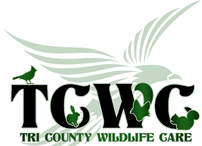SQUIRRELS are rarely found under structures, choosing higher places for nesting sites. Squirrels are mostly diurnal and busy hoarding food mostly early morning and late afternoon. They eat nuts, seeds and fungus, but when food is scarce, they may also eat frogs, small rodents and insects.
Squirrels commonly mate twice a year, December through February and May through June. They have their young in 30-45 days and the young will leave the nest at 10-12 weeks of age. A litter is 2-8 baby squirrels which
should be considered prior to any removal efforts.
Squirrels commonly nest in hollow trees, but can also take up residence in attics and wall spaces. Common entires are attic vents, soffits vents and rotten fascia boards.
Squirrel damage can range from chewed wood to electrical wiring and pipes. Solutions include:
We are happy to work with you on your individual problem. Please call us at 209-283-3245 for advice.
Squirrels commonly mate twice a year, December through February and May through June. They have their young in 30-45 days and the young will leave the nest at 10-12 weeks of age. A litter is 2-8 baby squirrels which
should be considered prior to any removal efforts.
Squirrels commonly nest in hollow trees, but can also take up residence in attics and wall spaces. Common entires are attic vents, soffits vents and rotten fascia boards.
Squirrel damage can range from chewed wood to electrical wiring and pipes. Solutions include:
- inspection to identify damage and entry point
- exclusion from entry point
- removal of feces and damaged material
- clean up of any food material
We are happy to work with you on your individual problem. Please call us at 209-283-3245 for advice.


